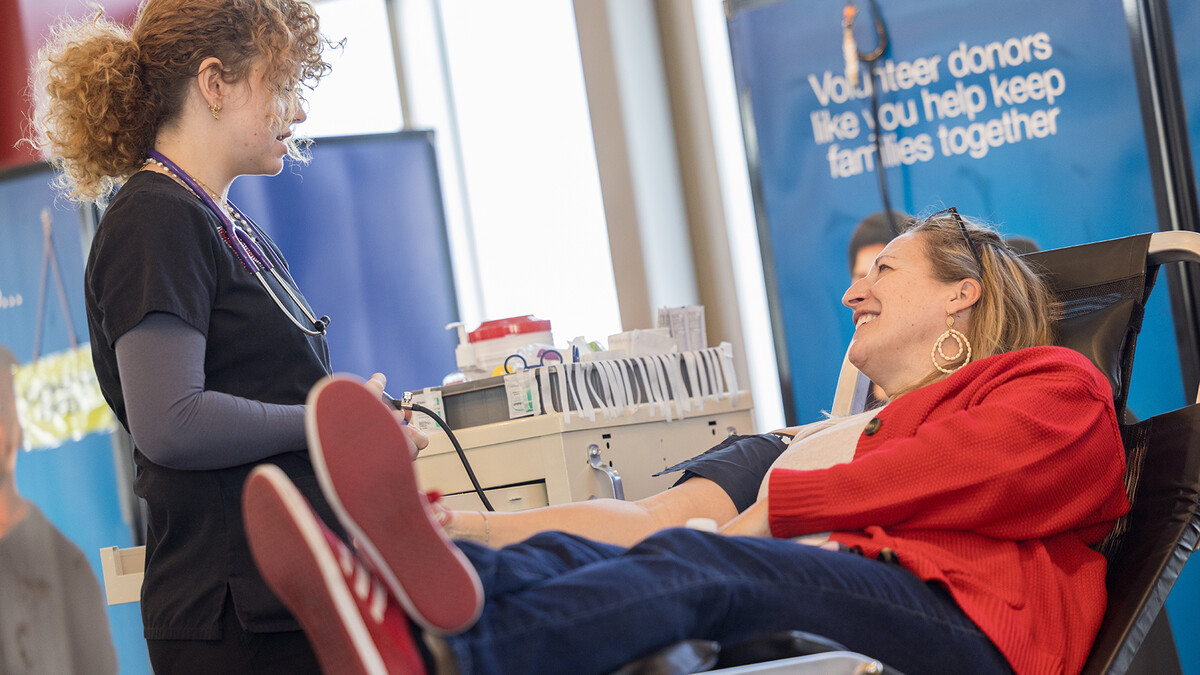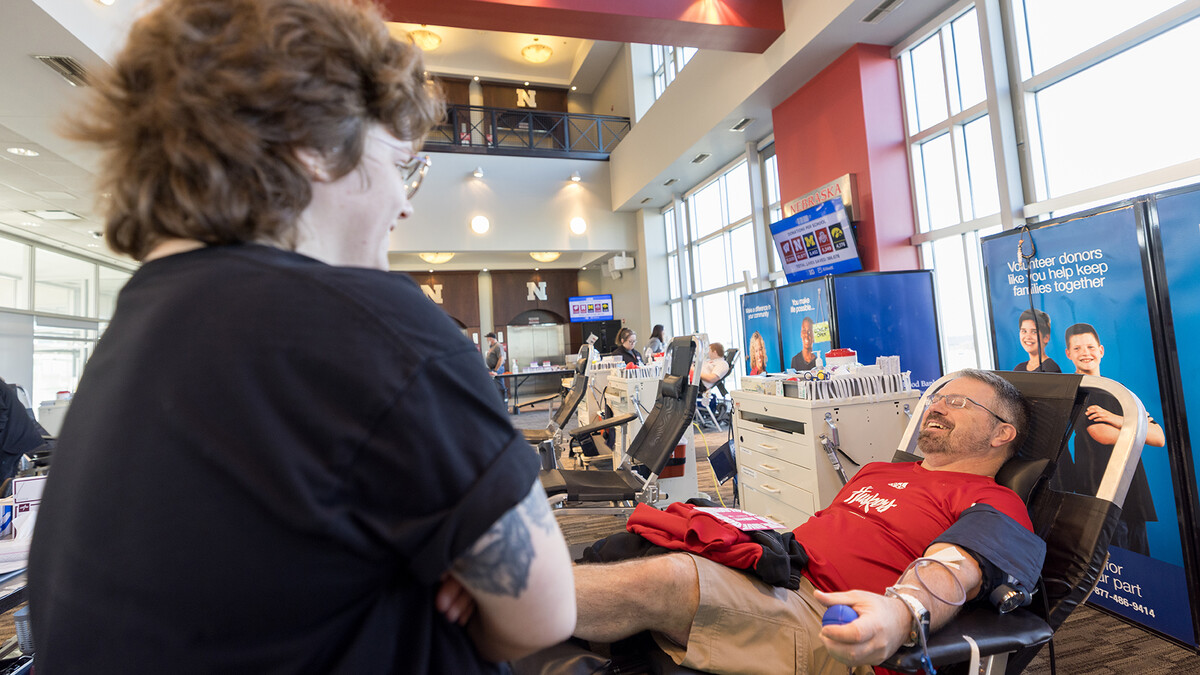
Identification of new animal species. Fresh insights into politics, literature and religion. Technological and biological breakthroughs. Astute observations on current events and social change.
UNL faculty, students and programs appeared in national media reports more than 700 times during 2014, including a handful of high-impact stories that scores of outlets covered by producing original content or by carrying syndicated coverage. On the other end of the scale were reports that included UNL sources as part of a bigger story. They shared their expertise and experience on a fascinating array of topics. Here are some highlights:
Discoverers and agenda setters:
UNL scientists announced the discovery or identification of three previously unrecognized species during the year. Director Frank Rack and a team from the Antarctic Geological Drilling (ANDRILL) program based at UNL received worldwide news coverage in January for finding thousands of sea anemones buried in ice on the underside of the Ross Ice Shelf in Antarctica. In May, Time magazine named Edwardsiella andrillae, the first sea anemone found to live in ice, as one of its top 10 species for 2014.
Scott Gardner, director of the Harold W. Manter Laboratory of Parasitology, appeared in National Geographic and on NBC News, among other national outlets, for his discovery of four previously unidentified species of tuco-tucos, a gopher-like species that lives in South America. Gardner also was part of an international team of scientists that identified a 240 million-year-old pinworm egg, believed to have infected cynodonts, the ancestors of modern mammals.
Leading-edge research into the biology of political differences had political scientists John Hibbing and Kevin Smith making scores of headlines throughout the year. The Washington Monthly covered their 2014 book “Predisposed: Liberals, Conservatives and the Biology of Political Differences.” Newly published studies, including one linking the stress hormone cortisol with voting behavior and another using functional Magnetic Resonance Imaging, also generated news items. When the pair weren’t talking about their research, they shared election-year insights about Nebraska politics with national reporters. Smith, for example, authored “Little House on the Prairie,” a Politico piece on Nebraska’s one-house legislature.
Multiple UNL-led research efforts into the causes and consequences of obesity also received extensive coverage. In February, USA Today, Reuters and CNN covered a study by Tim Nelson, psychology, and graduate student Alyssa Lundahl that showed many parents don’t recognize when their child is overweight. In August, the Associated Press reported that UNL received an $11.3 million grant from the National Institutes of Health to establish a research center focused on understanding nutrition and obesity at the molecular level. The center will be led by Janos Zempleni, nutrition and health sciences. An engineering approach to combating obesity, led by Jung Yul Lim, mechanical and materials engineering, was featured by the National Science Foundation’s news service in May.
Drone technology also generated national news coverage for UNL researchers. Matthew Waite, director of the Drone Journalism Laboratory, was quoted by NBC News, National Public Radio, the Huffington Post, the Washington Post and many other outlets about an array of topics relating to the commercial use and regulation of unmanned aerial vehicles. In December, an Associated Press article about tornado research using drones, led by Adam Houston, earth & atmospheric sciences, appeared in the New York Times and many other outlets across the country.
NBC News turned to Kenneth Cassman, agronomy, Donald Wilhite, climate science, and Roberto Lenton, Daugherty Water for Food Institute, for in-depth reports on the prospects for global drought and for reports on the prospects for global drought and food supply.
Timothy Gay and Joan Dreiling, physics, were covered by Scientific American and other major publications after they solved the long unanswered puzzle of the asymmetry of life – why biochemical molecules are “left-handed” or “right-handed.”
The New York Daily News and Smithsonian Magazine took notice when Wendy Katz, art and art history, discovered a lost Walt Whitman poem in the pages of an old “penny paper” in the Library of Congress newspaper archives. The 15-line poem was credited only to someone with the initials “W.W.” Katz was able to confirm it was penned by Whitman.
Trusted experts, thoughtful analysts:
Timothy Gay, physics, was quoted on NBC News and ABC News, when he testified before Congress in March about brain injuries in sports. Dennis Molfese, director of the Center for Brain, Biology and Behavior also testified at the hearing.
Time magazine was among scores of national outlets that covered a study by Adam Liska, biological systems engineering, that cast doubt on the environmental benefits of biofuels made from cornfield residue.
Robert Shepard, Center for Great Plains, got headlines in Time magazine and elsewhere for his study examining how depopulation affects the ratio of young men to young women in rural communities in Nebraska and Kansas.
Mitchel Herian, political science, made the news with his study that found states where liberal politics dominate tend to have better health than those where conservatives preponderate.
Religion News Service, Inside Higher education, and The Atlantic.com were among publications that picked up on research into the changing demographics of religion by Philip Schwadel, sociology. Among other things, Schwadel found that college graduates are not more likely to turn away from religion.
Efforts to improve diversity in UNL’s computer science department captured national attention after UNL joined a nationwide initiative led by the Anita Borg Institute and Harvey Mudd College. In December, the Washington Post published an article that looked at UNL’s efforts to encourage more women to enter fields such as math, computer science and statistics. The story quoted statistics professors Erin Blankenship and Walter Stroup; students Marina Ptukhina, Aimee Schwab and Dola Pathak, along with computer science department chair Matthew Dwyer and math department chair Judy Walker.
From maps and data to analysis, scientists at the National Drought Mitigation Center served as the go-to source for reporters covering the ongoing drought in California. In one of dozens of examples throughout the year, , climatologist Mark Svoboda commented for ABC News for this March 25 story about attempts to truck salmon to their spawning beds because the Sacramento River lacked enough water.
The changing scene:
UNL experts added perspective to unfolding events. Engineering Dean Timothy Wei, for example, was mentioned on NPR’s Science Friday during the 2014 Winter Olympics to talk about his work to help skeleton racers trim seconds off their time. Timothy Gay, physics, was interviewed by the LA Times and the Wall Street Journal about how physics might affect the outcome of the 2014 Super Bowl.
Frans von der Dunk, Matthew Schaefer and Justin “Gus” Hurwitz, professors with UNL’s Space, Cyber and Telecommunications Law Program, were interviewed for their insights into events like the European space landing on an comet, commercial space flight efforts and internet regulation.
Film studies professor Wheeler Winston Dixon commented on many events as they unfolded in the entertainment industry, from the 2014 Oscars, to the deaths of Shirley Temple, Robin Williams and Mike Nichols, and the enduring impact of films Pulp Fiction and Ghostbusters as they marked milestone anniversaries. Los Angeles Times stories that were syndicated worldwide quoted him on a computer hack of Sony Pictures in apparent retaliation for “The Interview,” a movie about a fictional assassination plot against North Korean dictator Kim Jong Un.
Here are links to monthly reports of UNL’s national news coverage in 2014: January, February, March, April, May, June, July, August, September, October, and November.
Faculty, administration, student and staff appearances in the national media are logged at http://newsroom.unl.edu/inthenews. If you have additions to this list or suggestions for national news stories, contact Leslie Reed at lreed5@unl.edu or 402-472-2059.







